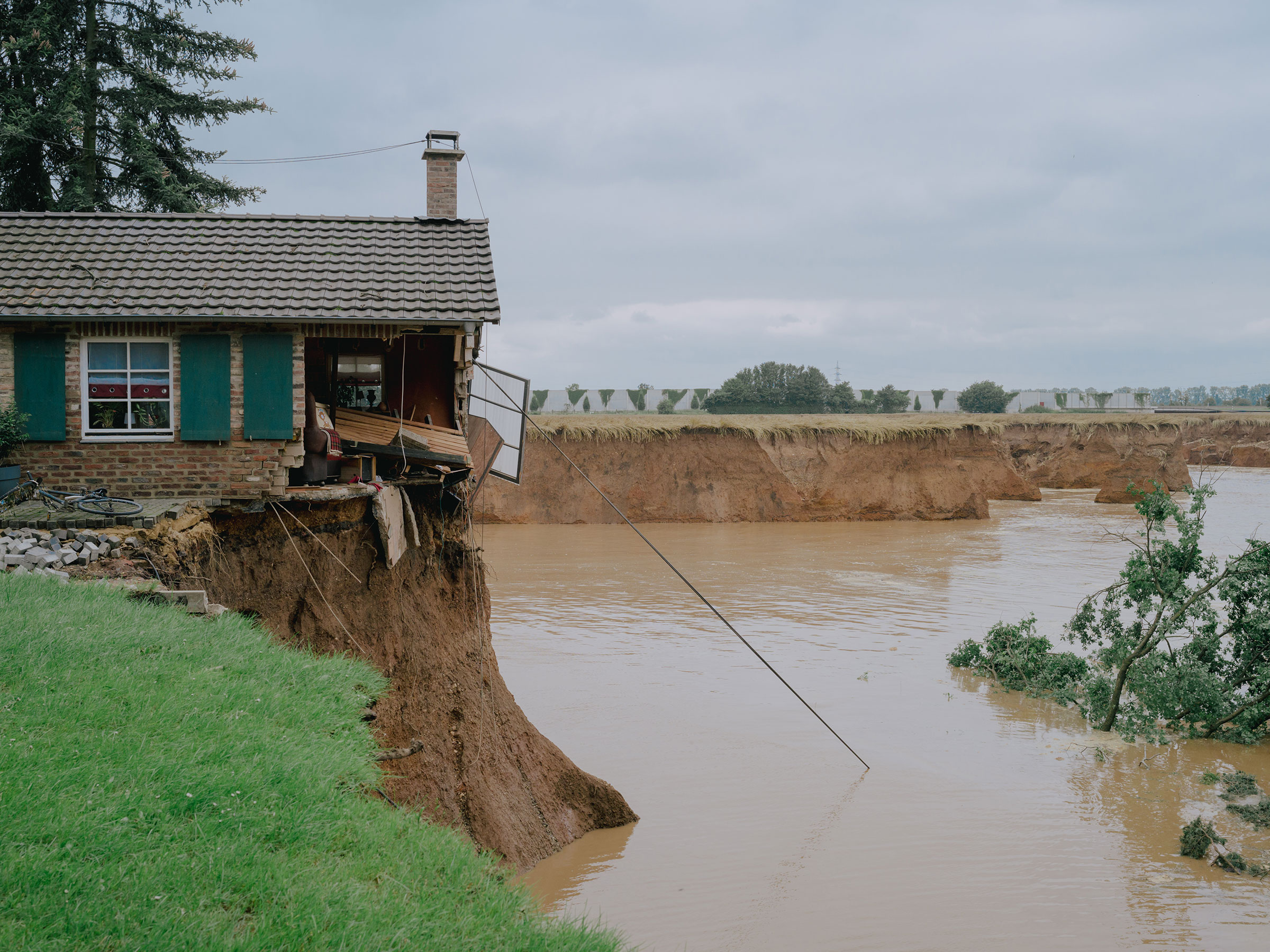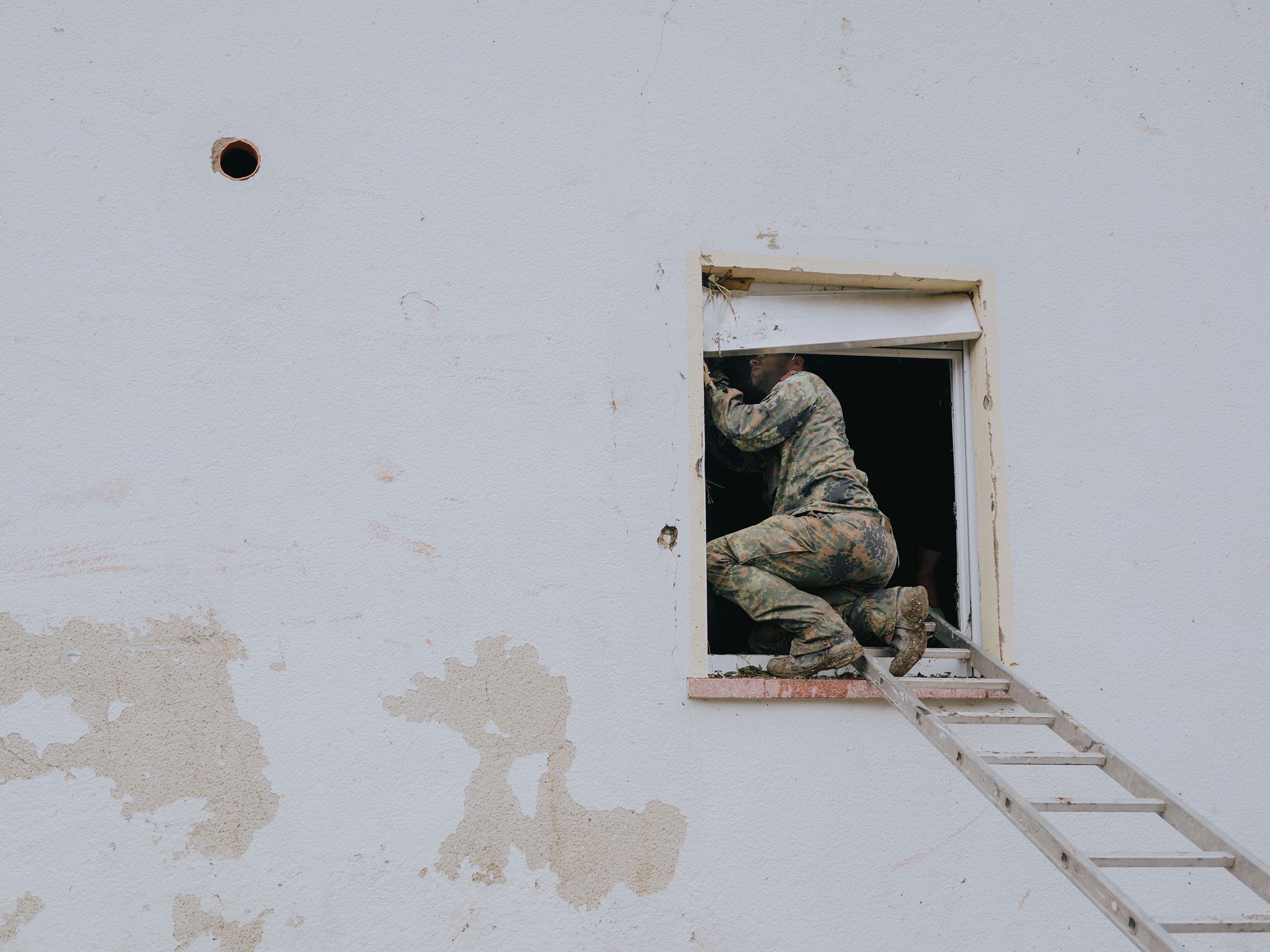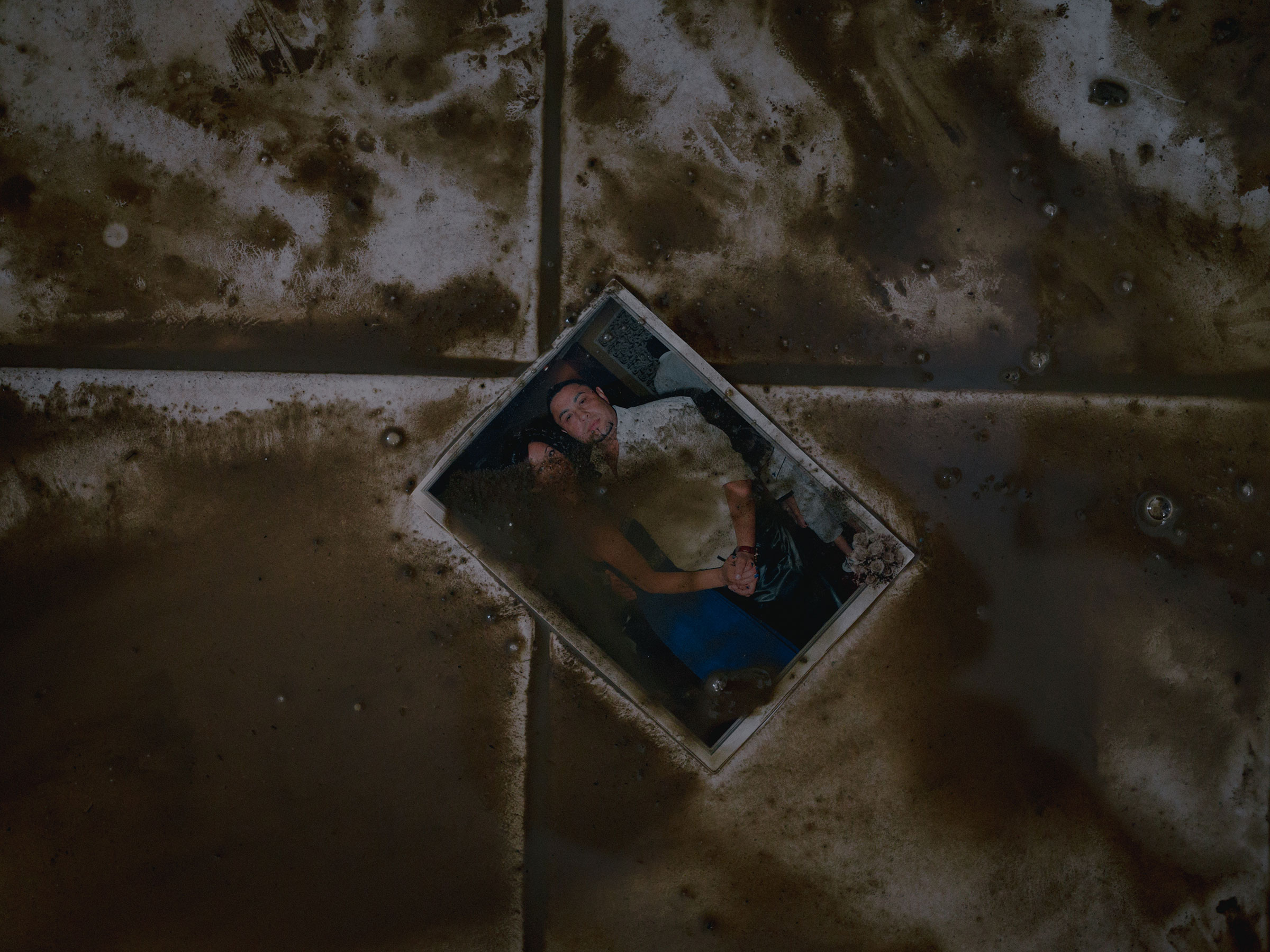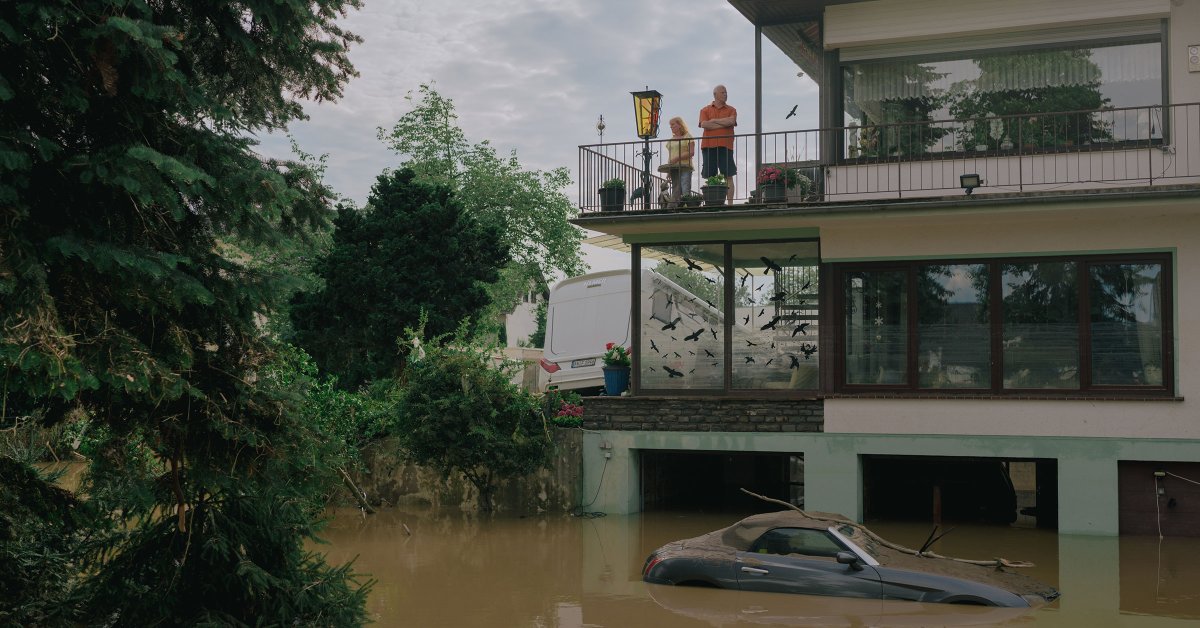[ad_1]
Gaping holes of muddy brown water where manicured streets used to be. Huge piles of abandoned belongings set on fire because there’s nowhere else to put the trash. Army tanks rolling through once picturesque villages now turned to rubble.
Northwestern Europeans—accustomed to a mild climate rarely troubled by the extremes of weather they see on the news—were not prepared for the scenes they saw this week after the worst flooding to hit the region in at least 80 years.
“People kept saying it was worse than the war,†says Arne Piepke, from the DOCKS photography collective, which captured the scenes in western Germany—the center of the flooding. War was the best analogue locals could think of for the death and destruction wrought by the weather, he says. “This just hasn’t happened here before.â€
More than 7 inches of rain fell on parts of the western German states Rhineland-Palatinate and North Rhine-Westphalia between Tuesday and Thursday— roughly double the normal expected rainfall for the whole of July, causing major rivers to burst their banks and sweep away entire villages.

A view of the flood-damaged village of Dernau from a hillside on July 15, 2021.
DOCKS Collective

Cars and flood damage in the village of Ahrweiler, Germany on July 15, 2021.
DOCKS Collective
At least 160 people died in Germany and 31 in Belgium, and hundreds more are missing. Some 370 miles of railway tracks were damaged. “The German language has no words, I think, for the devastation,†Merkel told reporters as she surveyed the damage in Schuld, a town on the River Ahr.
It will need one. Developing countries have long borne the brunt of extreme weather events, especially those with few resources to deal with them. In Madagascar, for example, the worst drought in 40 years is currently pushing 400,000 people to the brink of starvation. But the summer of 2021 is showing us that nowhere is safe in the climate change era. In June, a normally temperate village in western Canada briefly became the hottest place on earth and then burst into flames, with 90% of its buildings destroyed by a wildfire. Dramatic—though far less devastating—disruption also visited New York and London this month, when several inches of rain fell in a few hours, gushing into subway systems and leaving shocked commuters to wade through waist-deep dirty water.

A military unit supports the clean-up efforts in the village of Schuld, Germany on July 16, 2021.
DOCKS Collective
A sense that wealthy countries with typically mild climates won’t really be affected by extreme weather may have made the death toll worse in Germany. Some have criticized the effectiveness of warning systems in the affected states, arguing they didn’t communicate the seriousness of the rainfall, which meteorologists had flagged early last week. In the hard-hit village of Bad Neuenahr-Ahrweiler, people told DOCKS they had gone to sleep and were only alerted to rapidly rising water by their dogs barking. In at least four instances, people drowned in their basements, some of them trying to save their belongings, rather than flee.
“People thought ‘yeah, I guess it’s going to rain a lot.’ But they don’t know what that means,†says Karsten Haustein, a climate scientist and meteorologist at Climate Service Center Germany (GERICS), a research center. “We have to get rid of this thought that somehow extreme and severe weather cannot impact us—this is the climate hubris we have going on in Europe.â€

A house damaged by floods in Erfstadt Blessem, Germany, July 16, 2021.
DOCKS Collective

A soldier helps clear debris in a flooded bakery in the village of Schuld, Germany on July 16, 2021.
DOCKS Collective

A personal photo of Sadeta and Imer Sokoli on the floor of their flood-damaged apartment in Bad Neuenahr-Ahrweiler, Germany, July 17, 2021.
DOCKS Collective
Studies will need to be done to confirm that climate change directly caused these floods. But scientists say it is safe to assume that it wouldn’t have rained so much, for so long, without the warming of the planet. For one thing, warmer air can hold more moisture—7% more for every 1°C increase in temperature—and Germany’s average temperature has risen by more than 2°C over pre-industrial times.
Another factor that might have played a role is the slowing of regional air currents as the difference in temperature between the polar regions and the equator decreases, meaning low pressure systems can stay in one place for a longer time. In western Europe this week, that might have allowed the rain to fall on the same place for longer. A similar effect led the intense “heat dome†system to linger over western Canada for a perilously long time in June.

A damaged clothing store in the aftermath of the floods in the city center of Euskirchen, Germany, July 16, 2021.
DOCKS Collective

Hundreds of people have volunteered to sort through donations for flood victims at a collection point in Nürburgring, Germany, July 16, 2021.
DOCKS Collective

A temporary collection site for flood debris in Rheinbach, Germany on July 17, 2021.
DOCKS Collective
With climate change, Haustein says, “at some point, an event which would have been just heavy rainfall without too much damage is suddenly a really catastrophic event. That threshold will simply be crossed more often.â€
Europe has done more than most regions to recognize the risks of climate change and step up efforts to fight it. In the same week that the floods hit, the E.U. presented its plan to drastically overhaul its economy to cut greenhouse gas emissions by 55% by 2030 compared to 1990 levels. Germans themselves are even more concerned about climate change than other European citizens, according to regional polls, and the country’s Green Party is projected to make significant gains at its September elections.

Pastor Klaus Kohnz from Nürburg takes calls from the many people who lost their homes in the flood, July 17, 2021.
DOCKS Collective

A flooded cemetery in Ahrweiler, Germany on July 15, 2021.
DOCKS Collective
But even the most drastic efforts to cut carbon emissions—which face huge barriers to success—will not reverse the destabilization of our climate that we are beginning to see. A certain amount of further warming is already baked into our future, since carbon dioxide lingers in the atmosphere for around 100 years, and will keep trapping more heat. As a result, scientists warn that recent weather events are not a “new normal†but the end of any kind of normal or stable climate altogether.

Rescuers search for flood victims at night in the village of Dernau, Germany on July 15, 2021.
DOCKS Collective
For that reason, experts say governments urgently need to widen their focus to include adapting to that instability—as well as emissions cuts—in the coming months and years. Adaptation will mean costly efforts to make homes, transport and infrastructure much more resilient to heat, rain and droughts. It may also mean expanding and formalizing our systems for cleaning up after disasters. At the very least, it means better warning systems and more public awareness that extreme weather is a real threat—whichever country you live in.
[ad_2]
Source link







